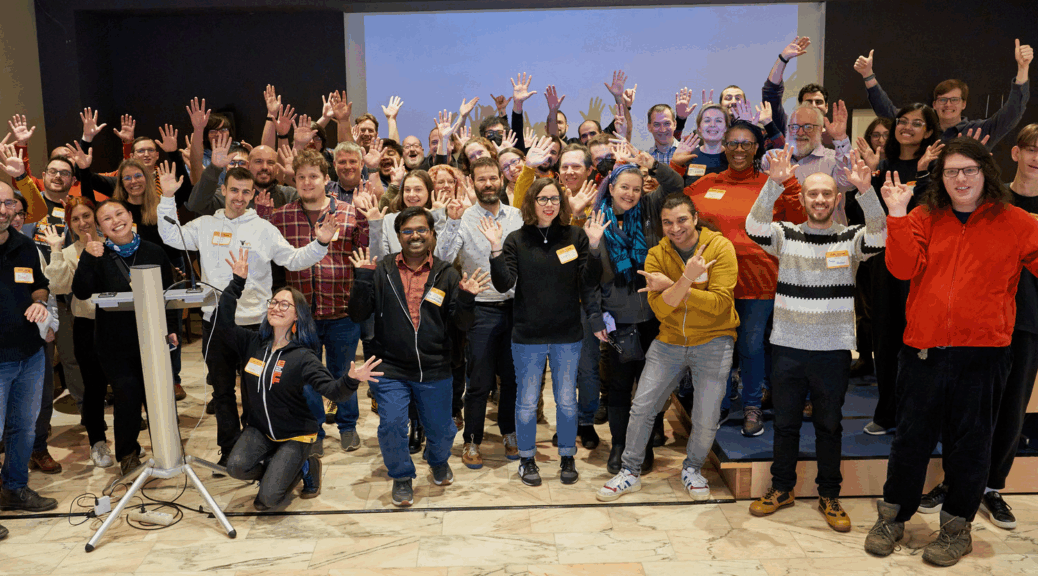Last week, I had an article published in Computer magazine, an IEEE publication: From Data to Action: Building Healthy and Sustainable Open Source Projects (the PDF version is in an easy to read format). One of the primary ways that the CHAOSS project is helping people improve the health and sustainability of their open source projects is via the Practitioner Guide series, which I covered in more detail in the Computer article.
On a related note, we’ve published two new Practitioner Guides this week: Getting Started with Sunsetting an Open Source Project and Getting Started with Building Diverse Leadership! These new guides complement the previously released guides that I talked about in a recent blog post. The rest of this post has a few more details about the Computer magazine article and the two new guides.
In the Computer magazine article, I talked about how the CHAOSS project is providing advice and resources for proactively using metrics to improve open source project health and sustainability before a crisis occurs to make software more sustainable and reliable for everyone. Here’s a short quote from the Computer magazine article:
“Building sustainable open source projects over the long term can be a challenge. Project leaders, maintainers, and contributors are busy people who don’t always have the time to focus on growing a community along with maintaining their software. Using metrics is one way to help identify potential issues and areas where a project can be improved to make it more sustainable over the long term. Metrics are best used if they aren’t used once and never again. By monitoring the data over time, projects can understand trends that might indicate areas for improvement as well as see if those improvements are having the desired effect. Being proactive about improving sustainability before it becomes a crisis can help make open source software more sustainable and reliable for everyone” – Read the rest of the IEEE Computer magazine article for more.
The newest guide in the series, Practitioner Guide: Getting Started with Building Diverse Leadership, was written by Peculiar C. Umeh. It expands on the theme of improving health and sustainability of open source projects by creating a welcoming and inclusive environment that encourages contributions from a wide variety of people. Here’s a quote from the guide:
“A community or project with diverse leadership offers significant advantages because diverse leadership leverages diverse perspectives to build an innovative community, create a welcoming and inclusive environment, and empower individuals from all backgrounds to contribute their unique talents. New and existing contributors feel more included when they can see other people in leadership positions who are like them (Linux Foundation, 2021). When diverse leaders collaborate, their intersection sparks innovation and creates a more harmonious global leadership system. It represents a global and diverse user base, which improves the usability of the project because more users’ voices are represented in decision-making about the project’s design and functionality. It enhances decision-making processes by incorporating various viewpoints and experiences, leading to better problem-solving and more effective strategies. It promotes a culture of inclusion and respect, improving morale and engagement among community members and ultimately contributing to projects’ long-term success and sustainability.” – Read the Practitioner Guide: Getting Started with Building Diverse Leadership for more.
The other new guide in the series, Practitioner Guide: Getting Started with Sunsetting an Open Source Project, is also about making open source more sustainable by being clear about the future of an open source project so that users can make responsible decisions and avoid using open source technologies that are no longer being maintained or updated with security fixes. Here’s a quote from the guide:
“Many open source projects, even widely used ones, become abandoned for a variety of reasons (e.g., evolving interests, family situations, employment changes), but abandonment can be done in a responsible way by proactively sunsetting the project (Miller et al. 2025). Sunsetting is an important consideration for corporate environments where it can be easy to lose track of projects that were created by employees who later walked away from the project and left if abandoned. You don’t want abandoned open source projects with security vulnerabilities sitting in your organization’s source code repositories where someone might trust that project simply because they trust your organization. Finding inactive projects and responsibly sunsetting them is a good business decision and something that many open source teams / Open Source Program Offices (OSPOs) do on a regular basis. It’s important to remember that not every open source project can or should exist forever: technologies evolve, corporate priorities change, and people’s interests change. Part of the beauty of open source is that we work in the open as we innovate, and some of those innovative projects will stand the test of time, while others should be responsibly deprecated via a sunset process. Sunsetting an open source project should take your user’s needs into account, and where possible, offer users time to migrate to a replacement technology. At a minimum, it’s important to signal that the project will no longer be maintained, updated, or have security patches so that users know that they should no longer be using the project.” – Read the Practitioner Guide: Getting Started with Sunsetting an Open Source Project for more.
As always, these CHAOSS guides are under an open source license, so you’re free to use and modify them to meet your needs.
If you want feedback or help with your open source strategy, I’m available for consulting engagements.
Photo by Jennifer Delmarre on Unsplash.



